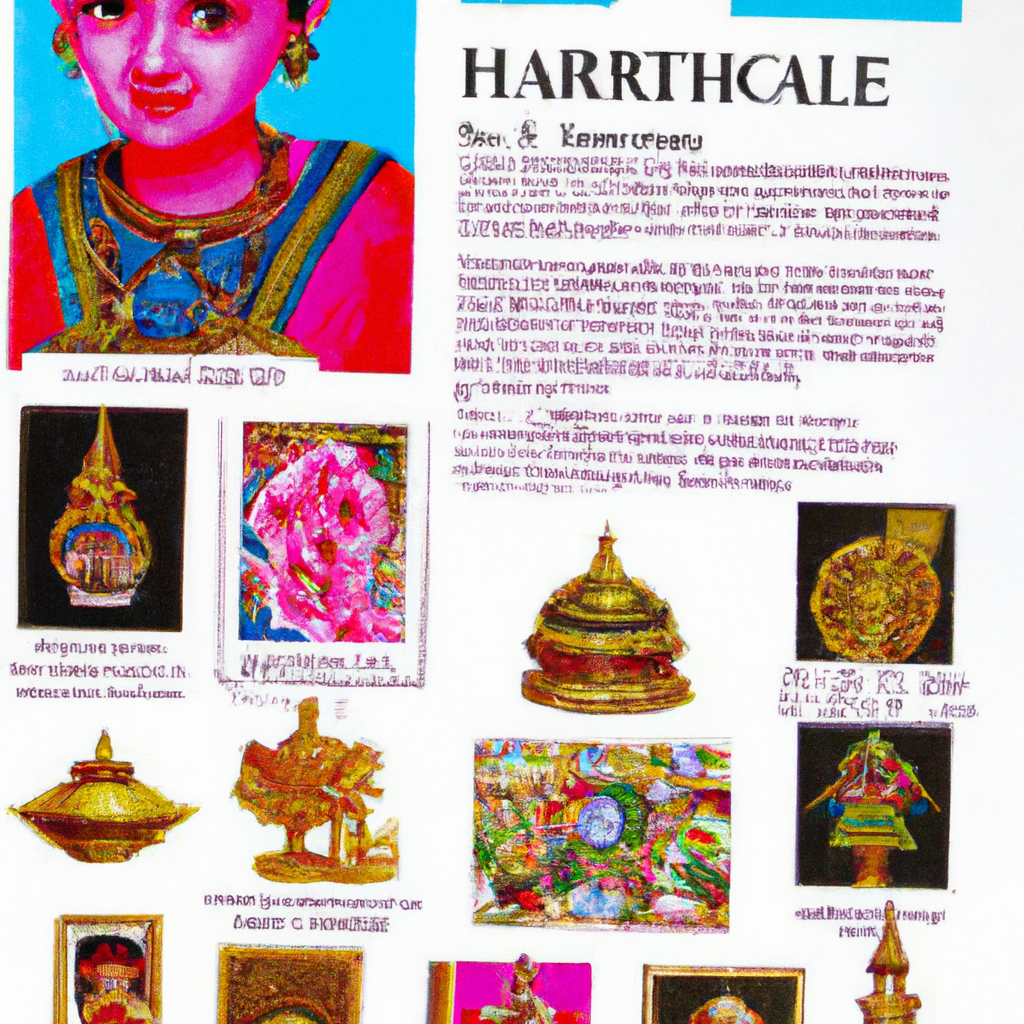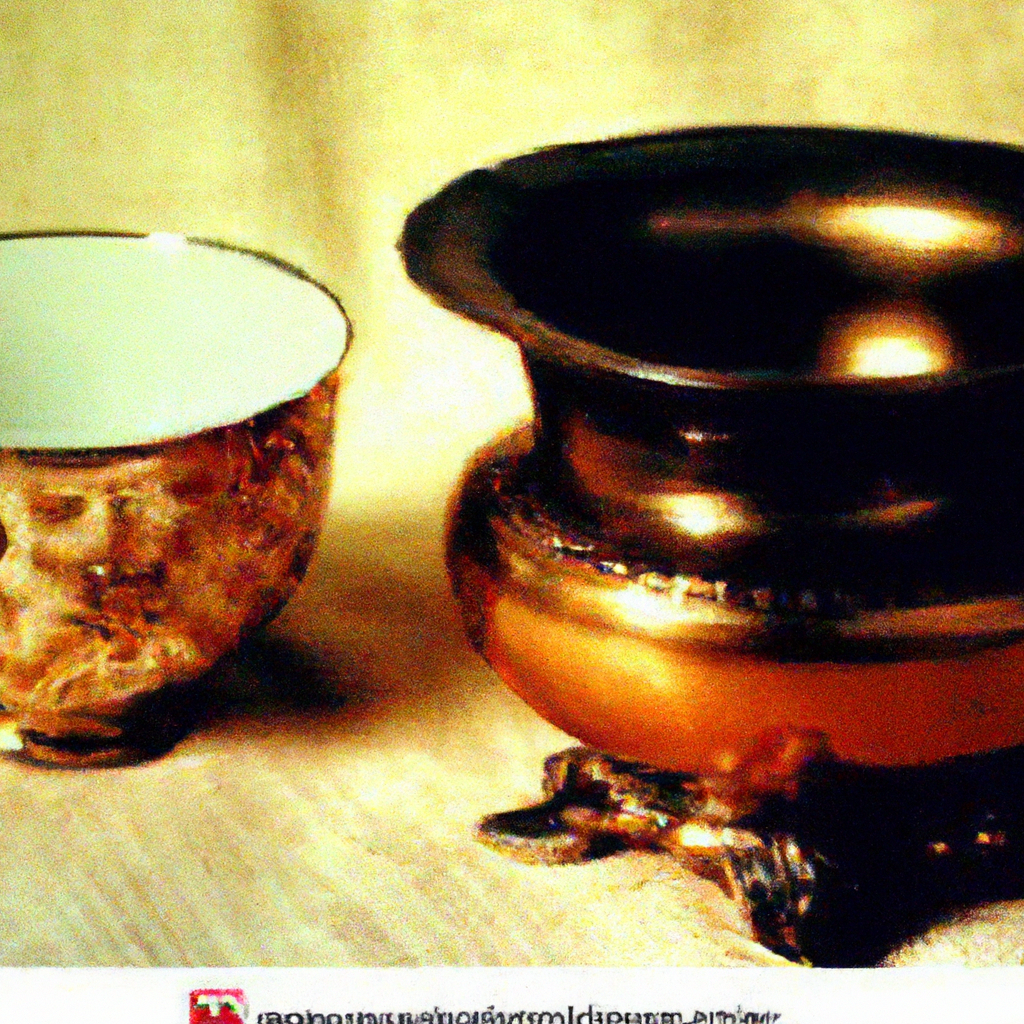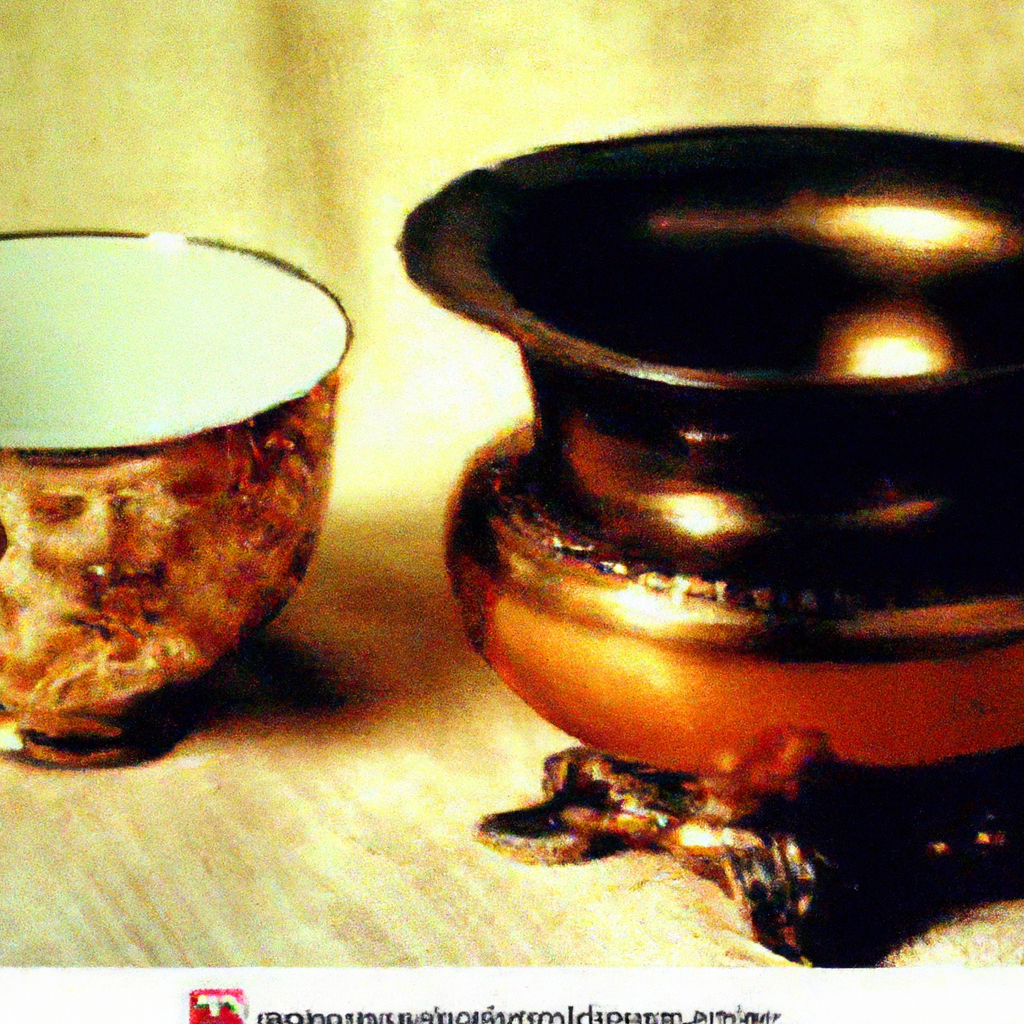Thailand, renowned for its vibrant culture, stunning landscapes, and delicious cuisine, is also home to a rich heritage of Thai lacquerware. This captivating art form, deeply rooted in the country’s history, dates back centuries and continues to thrive today. Thai lacquerware showcases intricate designs, vibrant colors, and exceptional craftsmanship, making it a must-see for tourists exploring Thailand’s cultural treasures. From intricate bowls and boxes to decorative furniture, this article will take you on an immersive journey into the fascinating world of Thai lacquerware, uncovering the techniques, stories, and beauty behind this remarkable art form.

The History of Thai Lacquerware
Thai lacquerware is a traditional craft that has been practiced in Thailand for centuries. Its origins can be traced back to early civilizations in Southeast Asia. The art of lacquerware was introduced to Thailand by migrants from neighboring countries, such as China, India, and Cambodia. These migrants brought with them their knowledge and skills in lacquer craft, which then merged with the local Thai artistic traditions and techniques.
Early Origins
The early origins of Thai lacquerware can be dated back to the ancient Dvaravati period, between the 6th and 11th centuries. During this time, lacquerware was primarily used for religious purposes, such as decorating sculptures and religious artifacts. The craft flourished under the influence of the Dvaravati Kingdom’s trade relations with other Asian civilizations, including the Khmer Empire and China.
Influence of Buddhism
The influence of Buddhism played a significant role in the development of Thai lacquerware. Buddhist monks, who traveled to Thailand from India, brought with them the practice of using lacquerware for religious rituals and ceremonies. The belief in the sacredness of lacquerware grew among the Thai people, and it became an integral part of Buddhist temples and monasteries. Buddhist motifs and symbols are commonly depicted in Thai lacquerware, reflecting the spiritual and religious significance of the craft.
Royal Patronage
Thai lacquerware also received royal patronage during various periods of Thai history. The Ayutthaya Kingdom, which reigned from the 14th to the 18th century, was particularly known for its support and promotion of lacquerware art. The royal court commissioned lacquerware pieces as gifts for foreign dignitaries and as decoration for palaces and temples. The intricate and ornate designs of Ayutthaya lacquerware became highly sought after and set the standards for craftsmanship in subsequent periods.
Materials and Techniques Used in Thai Lacquerware
Thai lacquerware involves a meticulous process that combines various materials and techniques to create stunning and durable pieces of art.
Natural Lacquer
The key ingredient in Thai lacquerware is natural lacquer, which is derived from the sap of the Thitsi tree (Melanorrhoea usitata). The sap is collected and refined to create a viscous, sticky substance that acts as both an adhesive and a protective coating. Natural lacquer is highly durable and resistant to heat, moisture, and insects, making it ideal for creating lacquerware.
Wooden Base
The wooden base of Thai lacquerware is typically made from lightweight and sturdy materials such as bamboo, teak, or jackfruit wood. The wood is carefully shaped and carved into the desired form, whether it is a bowl, box, tray, or other decorative item. The smooth surface of the wood is essential for achieving a flawless finish with the lacquer.
Inlay Work
Inlay work is a technique commonly used in Thai lacquerware to create intricate designs. Thin strips of metal, such as silver or gold, are meticulously embedded into the lacquerware base. The inlay work adds depth, texture, and a touch of luxury to the finished piece. It requires great skill and precision from the craftsmen, as each strip of metal needs to be perfectly placed and secured.
Gold Leaf Decoration
Gold leaf decoration is another distinct feature of Thai lacquerware. Thin sheets of gold are delicately applied to the lacquered surface, creating a dazzling and opulent effect. This technique is often used to highlight specific motifs or patterns, adding a touch of grandeur to the overall design. The application of gold leaf requires a steady hand and a keen eye for detail.
Painting and Engraving
Thai lacquerware is known for its intricate and vibrant paintings and engravings. Skilled artisans paint or engrave intricate patterns, scenes, or symbolic motifs onto the lacquerware using fine brushes or sharp tools. The designs often depict nature, mythical creatures, religious figures, or everyday life in Thailand. Multiple layers of lacquer and paint are applied, creating depth and durability in the final product.
Styles and Designs in Thai Lacquerware
Thai lacquerware comes in various styles and designs, each characterized by specific techniques, colors, and motifs.
Red Lacquerware
Red lacquerware is one of the most recognizable styles in Thai lacquerware. It is distinguished by its vibrant red color, which is achieved through multiple layers of red lacquer. The surface is often adorned with gold leaf decorations or intricate paintings featuring auspicious symbols, mythical creatures, or scenes from Thai folklore.
Black Lacquerware
Black lacquerware exudes elegance and sophistication. It is created by applying layers of black lacquer to the wooden base, followed by careful polishing to achieve a glossy finish. Black lacquerware is often embellished with gold or silver inlay work, creating a striking contrast against the dark background.
Gold Lacquerware
Gold lacquerware is the epitome of luxury and opulence. Multiple layers of gold lacquer are meticulously applied, giving the piece a radiant and lustrous appearance. Gold lacquerware is usually adorned with intricate engravings and embellishments, further enhancing its grandeur and beauty.
Mother-of-Pearl Inlay
Mother-of-pearl inlay is a technique commonly used in Thai lacquerware to create stunningly intricate designs. Thin slices of iridescent mother-of-pearl are carefully embedded into the lacquerware base, forming exquisite patterns or pictures. The shimmering effect of the mother-of-pearl adds a touch of elegance and grace to the piece.
Floral and Nature Motifs
Floral and nature motifs are prevalent in Thai lacquerware designs. Elaborate depictions of flowers, leaves, birds, and animals can be found adorning many lacquerware pieces. These motifs often convey a sense of beauty, harmony, and the connection between humans and nature. The detailed craftsmanship and vibrant colors used in these designs make them visually captivating.
Significance and Symbolism in Thai Lacquerware
Thai lacquerware holds deep significance and symbolism in Thai culture and society.
Protection and Prosperity
One of the key symbolic meanings associated with Thai lacquerware is protection and prosperity. The use of lacquerware in temples and homes is believed to ward off evil spirits and bring good fortune to the occupants. The robust nature of the lacquer coating offers protection against wear and tear, symbolizing longevity and resilience.
Religious and Spiritual Significance
Thai lacquerware is intrinsically linked to Buddhism, and many lacquerware items are used in religious and spiritual ceremonies. The presence of lacquerware in temples and monasteries is seen as a sign of honor and respect towards the teachings of Buddha. The motifs and symbols depicted in lacquerware often have religious connotations, serving as reminders of Buddhist virtues and teachings.
Cultural and Historical Representations
Thai lacquerware is also rich in cultural and historical representations. The designs and motifs featured in lacquerware reflect the diverse heritage of Thailand and its various historical periods. From intricate scenes depicting ancient battles to depictions of everyday life in historical Thai villages, lacquerware serves as a medium for preserving and passing down cultural narratives and traditions.

Traditional Lacquerware Centers in Thailand
Several regions in Thailand are renowned for their production of exquisite lacquerware.
Chiang Mai
Chiang Mai, located in northern Thailand, is a major center for traditional Thai lacquerware. The city boasts a thriving community of skilled artisans who specialize in the art of lacquerware. Visitors to Chiang Mai can explore workshops and studios to witness the creation process and even participate in hands-on workshops to learn the craft themselves.
Ayutthaya
The ancient city of Ayutthaya, once the capital of the Ayutthaya Kingdom, is known for its historical significance in Thai lacquerware production. Many of the intricate designs and techniques found in Thai lacquerware can be traced back to the Ayutthaya period. Visitors to Ayutthaya can visit museums and historical sites to learn more about the city’s lacquerware heritage.
Yala
Yala, situated in southern Thailand, is another prominent center for Thai lacquerware production. The region is known for its distinct style, characterized by intricate engravings and vibrant colors. Yala is also famous for its fusion of Malay and Thai cultural influences, which is reflected in its lacquerware designs and motifs.
Phitsanulok
Phitsanulok, located in central Thailand, is renowned for its high-quality lacquerware craftsmanship. The city’s lacquerware items often feature intricate gold leaf designs and delicate paintings. Phitsanulok is home to many skilled artisans who have mastered the traditional techniques passed down through generations.
Nakhon Si Thammarat
Nakhon Si Thammarat, in southern Thailand, is known for its unique lacquerware style inspired by ancient Khmer art. The region’s lacquerware typically features elaborate engravings and deep red or black lacquer coatings. Nakhon Si Thammarat’s lacquerware is highly sought after by collectors and art enthusiasts.
Modern Innovations and Challenges in Thai Lacquerware
While Thai lacquerware is deeply rooted in tradition, contemporary artists and designers have also brought new innovations and ideas to the craft.
Contemporary Artists and Designers
Contemporary Thai artists and designers have embraced lacquerware as a medium for expressing their creativity. They experiment with new materials, techniques, and forms, pushing the boundaries of traditional lacquerware. Through their innovation, they have introduced fresh perspectives and modern aesthetics to the art form, attracting a new generation of art enthusiasts.
Preservation and Conservation Efforts
Preserving and conserving traditional lacquerware techniques and materials is a significant challenge faced by the Thai lacquerware community. With the rise of mass production and the availability of cheaper alternatives, traditional crafts like lacquerware face the risk of being forgotten. Various organizations and initiatives have emerged to safeguard and promote the craft, offering training programs, exhibitions, and support to artisans.
Competition from Mass Production
Mass production of lacquerware items poses a threat to the traditional craft. Cheaper, machine-made lacquerware products flood the market, often lacking the fine craftsmanship and cultural significance found in traditional handmade pieces. However, discerning collectors and enthusiasts continue to seek out authentic handmade Thai lacquerware, valuing the uniqueness, quality, and cultural value of these items.
Collecting and Appreciating Thai Lacquerware
Collecting and appreciating Thai lacquerware requires an understanding of its authenticity, care, and display.
Identifying Authentic Pieces
Authentic Thai lacquerware pieces are distinguished by their craftsmanship, materials used, and cultural symbolism. Handmade pieces will often exhibit fine details, intricate paintings, and engravings that are not replicated in mass-produced items. It is essential to purchase from reliable sources, such as reputable galleries or traditional craft centers, to ensure the authenticity of the lacquerware.
Care and Maintenance
Proper care and maintenance are necessary to preserve the beauty and longevity of Thai lacquerware. Lacquerware should be stored in a cool and dry environment to prevent warping or cracking. Regular dusting and gentle cleaning with a soft cloth are recommended to keep the lacquerware free from dust and dirt. It is also important to avoid exposing lacquerware to direct sunlight or excessive heat, as it can cause fading or discoloration.
Display and Usage Tips
Thai lacquerware can be displayed as decorative pieces, functional items, or both. When using lacquerware for serving food or beverages, it is essential to handle the pieces with care to prevent scratching or chipping the lacquer coating. Displaying lacquerware in well-lit areas can enhance the beauty of the intricate designs and the luminosity of the lacquer. Pairing lacquerware with other Thai decorative items, such as silk textiles or traditional pottery, can create a harmonious and visually appealing display.
Thai Lacquerware as a Souvenir and Gift
Thai lacquerware makes unique and meaningful souvenirs or gifts, embodying the rich cultural heritage of Thailand.
Unique Cultural Souvenirs
For travelers seeking authentic and distinctive souvenirs, Thai lacquerware offers a wide range of options. From small trinkets and jewelry boxes to larger decorative bowls or wall hangings, there is something to suit every taste and budget. The intricate craftsmanship and symbolism behind each piece make Thai lacquerware an exceptional reminder of one’s visit to Thailand.
Symbolic Gifts for Special Occasions
Thai lacquerware is also a popular choice for gifts during special occasions. The cultural significance and symbolism associated with lacquerware can convey heartfelt messages of protection, prosperity, and good fortune. Lacquerware items adorned with auspicious symbols, such as lotus flowers or elephants, are particularly meaningful gifts for weddings, housewarming ceremonies, or other significant milestones.
Thai Lacquerware Workshops and Experiences
Immersing yourself in Thai lacquerware workshops and experiences allows you to gain a deeper understanding of the craft’s intricacies.
Learning the Craft
Numerous traditional craft centers and institutions offer courses and workshops for individuals interested in learning the art of Thai lacquerware. These programs typically provide hands-on training in various techniques, such as lacquer application, painting, and inlay work. Learning directly from skilled artisans ensures an authentic and immersive experience.
Hands-on Workshops
For visitors looking for a more immersive experience, hands-on workshops offer the opportunity to create their own lacquerware piece under the guidance of experienced craftsmen. Participants can choose from a range of items to create, such as bowls, coasters, or decorative items. These workshops provide a unique insight into the intricate craftsmanship involved in Thai lacquerware production.
Visiting Lacquerware Studios
Visiting lacquerware studios allows you to witness firsthand the creation process and interact with artisans. Many studios offer guided tours, where visitors can observe each stage of production, from carving the wooden base to the final lacquering and painting. These visits provide an insight into the history, techniques, and the passion that goes into creating Thai lacquerware.
Promoting Thai Lacquerware Tourism
Promoting Thai lacquerware tourism plays a crucial role in preserving the craft and supporting local artisans.
Museum Exhibitions and Galleries
Museum exhibitions and galleries dedicated to Thai lacquerware provide a platform for showcasing the beauty and cultural significance of the craft. These exhibitions often feature a wide range of historical and contemporary lacquerware pieces, accompanied by informative displays and interactive activities. They offer both locals and tourists the opportunity to appreciate and learn about Thai lacquerware.
Artisan Village Tours
Artisan village tours allow visitors to explore the communities where traditional Thai lacquerware is produced. These tours offer unique insights into the daily lives of artisans, their creative processes, and the cultural heritage tied to the craft. Travelers can witness craftspeople at work, engage in hands-on activities, and purchase authentic lacquerware directly from the artisans.
Inclusion in Cultural Festivals
Thai lacquerware can also be showcased and celebrated through cultural festivals and events. Inclusion in these festivities provides exposure for Thai lacquerware and allows visitors to experience the craft in a vibrant and dynamic setting. Festivals often feature live demonstrations, workshops, and performances that highlight the artistry and cultural significance of Thai lacquerware.
Preserving and Safeguarding Thai Lacquerware Heritage
Various initiatives and organizations play a vital role in preserving and safeguarding the heritage of Thai lacquerware.
Government Initiatives
The Thai government recognizes the importance of preserving traditional crafts, including lacquerware. It provides support through cultural policies, funding for training programs, and the establishment of craft centers and museums. These initiatives aim to promote the continuity of Thai lacquerware craftsmanship and ensure its cultural value is recognized and preserved.
Non-profit Organizations
Non-profit organizations dedicated to the preservation of traditional crafts, such as Thai lacquerware, play a critical role in supporting artisans and raising awareness. These organizations provide training, resources, and platforms for artisans to showcase their work. They also contribute to the sustainability of the craft by promoting fair trade practices and empowering local communities.
Community Education Programs
Community education programs aim to pass down the knowledge and skills of Thai lacquerware to future generations. These programs often target young individuals, providing them with opportunities to learn the craft and develop their artistic abilities. By engaging the local community in the preservation and promotion of Thai lacquerware, these programs ensure the craft’s longevity.
In conclusion, Thai lacquerware is a rich and vibrant art form that reflects Thailand’s cultural heritage and artistic traditions. Its journey through history, from its early origins to becoming a popular craft admired by locals and tourists, showcases the resilience and creativity of Thai artisans. The materials, techniques, styles, and symbolism found in Thai lacquerware make each piece a unique expression of Thai craftsmanship and cultural identity. Through continued appreciation, promotion, and preservation, Thai lacquerware can continue to thrive and be appreciated for generations to come.
